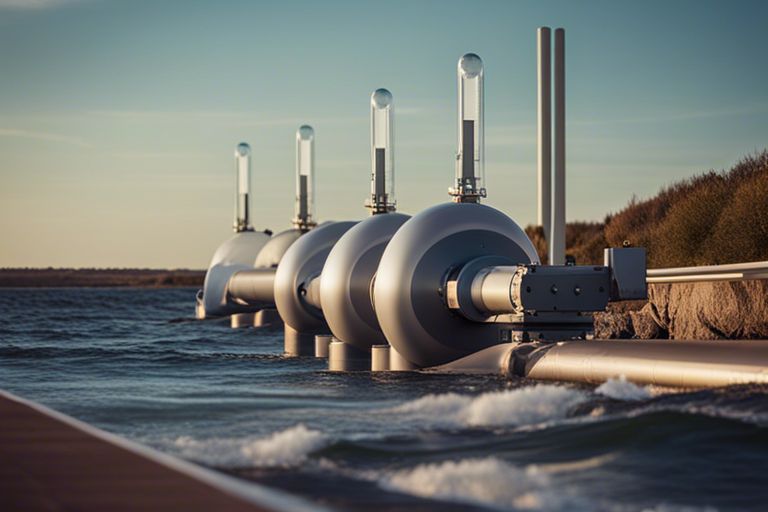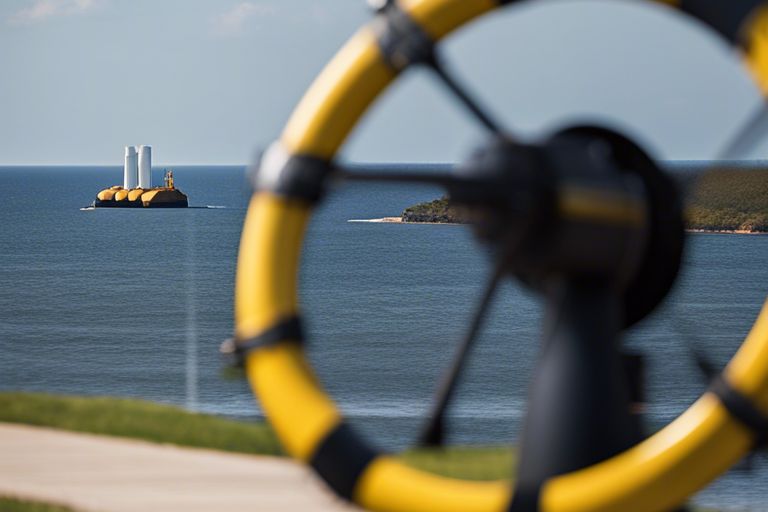Over the years, the pursuit of renewable energy sources has become paramount in reducing carbon footprints and combating climate change. While states with coastlines have readily embraced wind and solar energies, landlocked states like Oklahoma are exploring alternative options. With its vast network of rivers and streams, the possibility of tapping into tidal energy in Oklahoma has sparked curiosity. In this blog post, we examine into the feasibility of incorporating tidal energy as part of Oklahoma’s renewable energy mix, exploring the challenges, benefits, and potential impact on the state’s energy landscape.
Key Takeaways:
- Oklahoma’s potential for tidal energy: Despite being a landlocked state, Oklahoma does not have access to tidal energy resources for electricity generation.
- Focus on other renewable energy sources: Oklahoma should continue to harness its abundant wind and solar resources for renewable energy production.
- Tidal energy limitations: Tidal energy technology is still in the early stages of development and may not be a viable option for states without access to tidal resources.
- Environmental considerations: Tidal energy projects can have impacts on marine ecosystems and wildlife, making it crucial to assess the environmental implications before pursuing such ventures.
- Economic feasibility: The high costs associated with tidal energy projects may make it a less attractive option compared to other renewable energy sources that are more readily available in Oklahoma.
Understanding Tidal Energy
Fundamentals of Tidal Power Generation
Some of the vital principles behind tidal power generation involve harnessing the energy from the natural rise and fall of tides. By strategically placing turbines underwater, the kinetic energy generated by the movement of water is captured and converted into electrical power. This process is highly dependent on tidal patterns and requires specialized technology to effectively utilize this renewable resource.
Global Tidal Energy Landscape
Understanding the global tidal energy landscape provides insights into the potential and challenges of this renewable energy source. Tidal energy has the advantage of predictability, as tides follow a regular pattern influenced by lunar cycles. However, the initial investment costs for tidal energy projects can be substantial, with the need for robust infrastructure to withstand harsh marine conditions.
Tidal energy has the potential to contribute significantly to the renewable energy mix, offering a sustainable and consistent source of power. Countries like the UK, France, and Canada have been at the forefront of tidal energy development, showcasing the feasibility of integrating this technology into existing energy grids. As technology advances and economies of scale are achieved, tidal energy could play a more prominent role in the transition towards a cleaner, greener energy future.

Oklahoma’s Energy Profile
Current Energy Sources and Usage
Now, let’s investigate into Oklahoma’s current energy landscape. The state has historically been reliant on fossil fuels, particularly natural gas and oil, for its energy needs. According to the U.S. Energy Information Administration, in 2019, natural gas accounted for 46% of the state’s electricity generation, while wind power contributed 32% and coal 18%. This mix highlights the diversity of energy sources in Oklahoma.
Potential for Renewable Energy Expansion
The potential for renewable energy expansion in Oklahoma is significant. Currently, wind power plays a substantial role in the state’s energy portfolio, with Oklahoma ranking among the top states in the U.S. for wind energy capacity. With vast open spaces and strong wind resources, the state has a promising environment for further wind power development. In addition, solar energy also shows great promise for expansion in Oklahoma, with abundant sunshine throughout the state.
Energy policies and investments focused on renewable energy could further diversify Oklahoma’s energy mix, reduce its dependence on fossil fuels, and contribute to environmental sustainability.
Assessing Oklahoma’s Tidal Energy Potential
Geographic and Tidal Range Analysis
Unlike coastal states that have direct access to the ocean’s tidal energy, Oklahoma’s landlocked geography poses a challenge for harnessing tidal energy. The absence of significant tidal ranges in rivers or reservoirs further limits the feasibility of tidal energy generation in the state.
Economic and Environmental Considerations
Assessing the economic and environmental considerations for tidal energy in Oklahoma is crucial. An evaluation of the initial capital investment required to set up tidal energy infrastructure in the state needs to be conducted. Additionally, the environmental impacts, such as disruption to aquatic habitats and potential effects on wildlife, must be carefully studied.
Range: Despite the challenges, implementing tidal energy in Oklahoma could offer certain advantages. The predictability of tidal patterns can provide a stable source of renewable energy, reducing reliance on fossil fuels and lowering greenhouse gas emissions. However, careful planning and mitigation strategies are imperative to minimize potential negative impacts on the environment.

Integrating Tidal Energy into Oklahoma’s Grid
Technological Requirements
On the technological front, integrating tidal energy into Oklahoma’s grid requires specialized equipment such as tidal turbines, power electronics for grid connection, and energy storage systems. Tidal turbines must be designed to withstand the harsh marine environment and operate efficiently in varying tidal flows. The power electronics ensure smooth integration with the grid, managing the intermittent nature of tidal energy generation. Energy storage systems are crucial for storing excess energy during peak tidal periods for use when tides are low.
Policy and Regulatory Framework
Technological advancements make tidal energy a viable option for Oklahoma’s renewable energy portfolio. However, to successfully integrate tidal energy into the grid, a robust policy and regulatory framework is vital. Policies need to incentivize tidal energy development through feed-in tariffs, tax incentives, and streamlined permitting processes. Regulatory frameworks should ensure grid compatibility, fair market access, and environmental sustainability. Collaboration between government, utilities, and industry stakeholders is crucial for the successful implementation of tidal energy projects.
Final Words
With this in mind, it is clear that tidal energy is not a viable option for Oklahoma’s renewable energy mix due to its geographical location and lack of access to large bodies of water. While the state has other renewable energy sources such as wind and solar power, exploring alternative options like tidal energy may not be feasible in this region. It is vital for Oklahoma to continue investing in sustainable energy sources that are more compatible with its geographical features to ensure a reliable and efficient renewable energy mix for the future.
FAQ
Q: What is tidal energy and how is it utilized?
A: Tidal energy is a form of renewable energy that harnesses the power of the tides in the ocean to generate electricity. This is done through the use of turbines that are placed in areas with strong tidal currents.
Q: Is tidal energy a possibility for Oklahoma’s renewable energy mix?
A: While Oklahoma is not located near the coast where tidal energy can be readily harvested, it is not a feasible option for the state’s renewable energy mix.
Q: What are the advantages of tidal energy?
A: Tidal energy is a predictable and reliable source of renewable energy, as the tides are influenced by the gravitational pull of the moon and sun. It is also a clean source of energy that does not produce greenhouse gas emissions.
Q: What are the challenges of implementing tidal energy technology?
A: One of the main challenges of tidal energy is the high initial cost of installing and maintaining the necessary infrastructure, such as turbines and underwater cables. Environmental concerns and impact on marine life are also important factors to consider.
Q: Are there any successful tidal energy projects around the world?
A: Yes, there are several successful tidal energy projects around the world, such as the MeyGen project in Scotland and the Rance Tidal Power Station in France. These projects have shown the potential of tidal energy as a reliable source of renewable energy.
Q: What are some alternative renewable energy sources for Oklahoma?
A: Oklahoma has abundant wind and solar resources, making wind energy and solar power viable options for the state’s renewable energy mix. Biomass and geothermal energy are also potential sources that can be explored.
Q: How can Oklahoma increase its renewable energy capacity?
A: Oklahoma can increase its renewable energy capacity by investing in wind and solar projects, incentivizing renewable energy development through policies and regulations, and promoting energy efficiency measures to reduce overall energy consumption.




